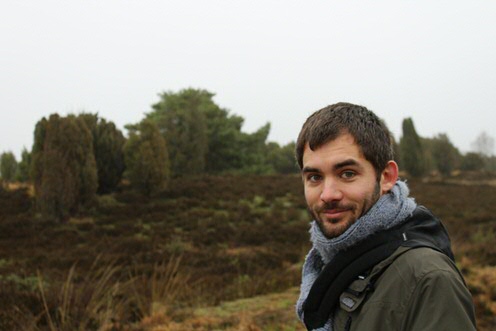The late Neolithisation of Northern Europe through the looking glass of MicroTRASH
From January 2021 onwards, Dr. Jos Kleijne will be working at the Groningen Institute of Archaeology (GIA), after having obtained a Marie Sklodowska Curie Individual Fellowship for his project MicroTRASH.
About the project MicroTRASH
Within this project, Kleijne is studying the late Neolithisation of Northern Europe. During the later Neolithic period (3500-2000 before Christ), major changes took place across Europe: an intensification of agricultural practices, the development of new burial rituals, and the migration of peoples, bringing new technologies and ideas across large distances. Such processes are less understood in the coastal regions along the North Sea and the Baltic. An important source of knowledge about the prehistoric communities from these coastal regions are the refuse heaps, so-called ‘middens’. Using micromorphological and biogeochemical (lipid biomarkers) methods in innovative ways, his research specifically targets these midden deposits, and provides a detailed and integrated picture of some of these coastal communities on both microscopic and molecular levels. At the Groningen Institute of Archaeology, Kleijne is supervised by Professors D.J. Huisman and D.C.M. Raemaekers. The biogeochemical analyses are taking place at the AMBI-Lab of Universidad de La Laguna on Tenerife, supervised by Dr. C. Mallol.
About dr. Jos Kleijne
Dr. Jos Kleijne (1987) studied prehistoric archaeology at Leiden University. Subsequently, he worked for three years at the Cultural Heritage Agency of the Netherlands as a specialist for later prehistory. Kleijne successfully defended his PhD in prehistoric archaeology at Kiel University in Germany in 2018, after which he continued working as a postdoc there, primarily focusing on Late Neolithic settlement and burial practices. In 2020, he obtained a MSCA-IF (Marie Sklodowska Curie Individual Fellowship) grant for his project MicroTRASH at University of Groningen, with a secondment at Universidad de la Laguna, on Tenerife. This project uses micromorphological and biogeochemical methods in understanding the refuse dumps that are found on settlements dating to the Neolithic along the North Sea and the Baltic coasts.

| Last modified: | 15 January 2021 2.14 p.m. |
More news
-
12 March 2025
Breaking news: local journalism is alive
Local journalism is alive, still plays an important role in our lives and definitely has a future. In fact, local journalism can play a more crucial role than ever in creating our sense of community. But for that to happen, journalists will have to...
-
11 March 2025
Student challenge: Starting Stories
The Challenge Starting Stories dares you to think about the beginning of recent novels for ten days.
-
11 March 2025
New: Sketch Engine, tool for language research
Sketch Engine is a tool for language research, which can also be used for text analysis or text mining.
